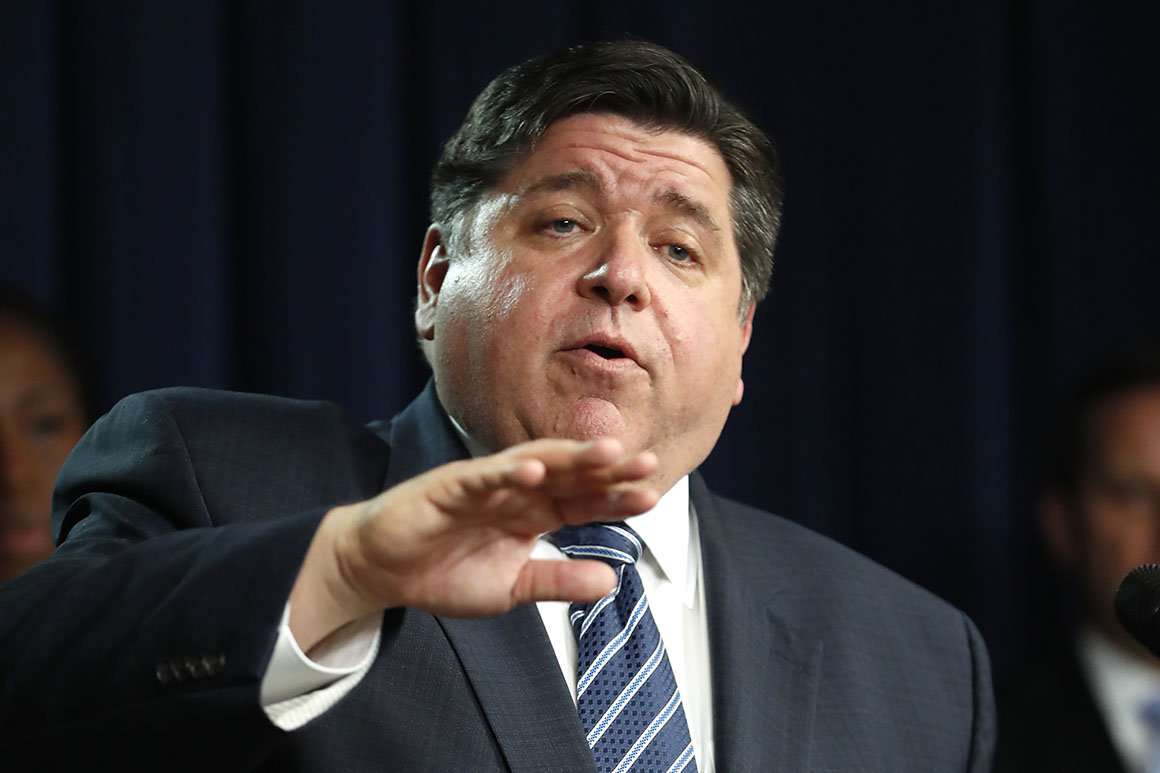
Less than a year after Democrats approved a half-trillion dollars in aid to state and local governments, many are now considering cutting taxes.
In red states as well as purple and blue ones, governors and state legislators are contemplating a long list of tax cuts: in personal income taxes and corporate levies, in property taxes and grocery taxes.
They’re debating reductions in capital gains taxes and taxes on diapers and gas. Some want to send one-time payments to residents.
That’s sparking criticism Democrats in Washington gave too much money to states as part of their $1.9 trillion coronavirus relief package, signed into law one year ago next month.
“This is the inevitable consequence of sending state and local governments money they didn’t need,” said Marc Goldwein, senior policy director at the Committee for a Responsible Federal Budget.
“States literally have more money than they know what to do with.”
Congress gave states roughly $500 billion last year, in addition to nearly $400 billion approved in 2020.
Last year’s installment came with strings stipulating states could not use the money to finance tax cuts.
But a funny thing happened: State tax receipts are proving so strong that experts say many don’t need federal dollars to fund tax reductions — they can finance them with money coming out of their own pockets.
“We ended the year with a surplus and tax collections continue to exceed projections in a big way,” Massachusetts Gov. Charlie Baker wrote on Twitter.
He's pushing legislators to cut taxes on both people with low-incomes, by excusing more of them from paying taxes, as well as higher earners, by easing the state’s estate and capital gains taxes.
The White House rejects the criticism of its state aid, saying its plan bolstered the economy, which is now giving states the fiscal wherewithal to cut taxes — even if the administration doesn’t necessarily agree with those plans.
“This plan was designed to both ensure an initial jump start to the economy and that state and local governments had the firepower to overcome predictable and unpredictable bumps in the road,” said Gene Sperling, a top administration adviser. “The American Rescue Plan succeeded in sparking more growth, more jobs, less unemployment and more revenue.”
“It did not restrict what people could do with surpluses from that growth.”
Not surprisingly, red states are leading the charge for lower taxes.
Idaho Gov. Brad Little signed a $600 million tax cut this month. Utah just finalized a $200 million tax cut. West Virginia’s House OK'd a cut in income taxes, while lawmakers in Mississippi are debating ending that state’s income tax altogether.
But it's not just happening in states led by conservatives.
“This year is shaping up to be the year of the bipartisan tax cut,” said Jared Walczak, vice president of state projects at the Tax Foundation. “We’re seeing red and blue states lining up to cut taxes.”
New York Gov. Kathy Hochul is proposing a $2 billion tax cut, including cuts in property taxes. Illinois Gov. JB Pritzker called for a nearly $1 billion tax reduction, including property tax rebates and suspending a tax on groceries, which he called a salve for surging inflation.
“We can do our part to alleviate some pressure on working families,” Pritzker said this month in his State of the State address.
Connecticut Gov. Ned Lamont proposed this month a $300 million tax cut. Vermont is debating creating a child tax credit similar to the one Democrats in Congress are trying to revive. On Tuesday, Michigan’s Senate approved a $2.5 billion tax cut.
States aren’t just flush from all the money Congress shipped to legislators.
They also benefited indirectly from Washington’s efforts to shore up the broader economy in the wake of the coronavirus outbreak. Three rounds of stimulus checks sent to millions of Americans as well as more generous unemployment benefits meant higher incomes, which meant higher income tax receipts for states.
The Federal Reserve slashed interest rates, which led to a stock market boom, which led to a spike in capital gains receipts.
Even bad news for the economy can mean a windfall for state coffers. Surging inflation and higher prices on everyday items means bigger sales- and restaurant-tax payments. Labor shortages have led to higher wages, which has led to higher income tax payments.
With many people still avoiding crowds, they are more likely to spend their money on goods than services — which are more likely to be taxed by state governments.
Aggregate state revenues now top pre-pandemic projections, with receipts in 2021 growing 14.5 percent, according to the National Association of State Budget Officers.
That’s spared many states from having to worry too much about Treasury’s restrictions on tax cuts, said Brian Sigritz, NASBO's director of state fiscal studies.
“Because of the growth in states’ own tax collections, it hasn’t been a huge issue,” he said.
Those rules, which several states are now challenging in court, require them to return stimulus money to the U.S. Treasury if they’re found to use it to pay for tax cuts.
In the meantime, states continue to ratchet up their estimates of how much tax they expect to collect.
Oregon says it now anticipates $800 million more than it forecast just a few months ago. On Friday, Virginia Gov. Glenn Youngkin said his state now expects an additional $1.25 billion this year. In North Carolina, receipts are running 9 percent higher than officials had projected.
“We’re continuing to see revenues come in above forecasts,” Sigritz said.
----------------------------------------
By: Brian Faler
Title: Flush with cash, states eye tax cutting spree
Sourced From: www.politico.com/news/2022/02/21/state-tax-cuts-00009451
Published Date: Mon, 21 Feb 2022 07:00:00 EST






